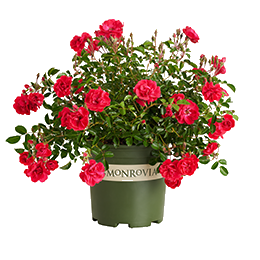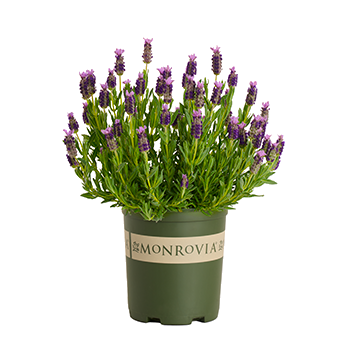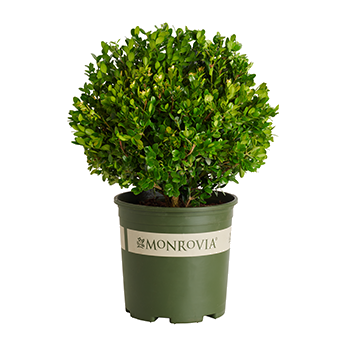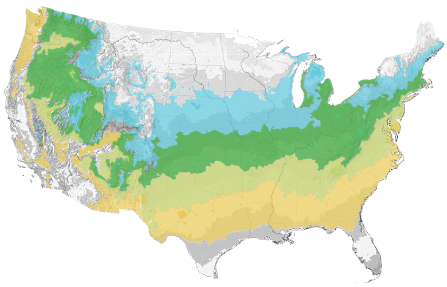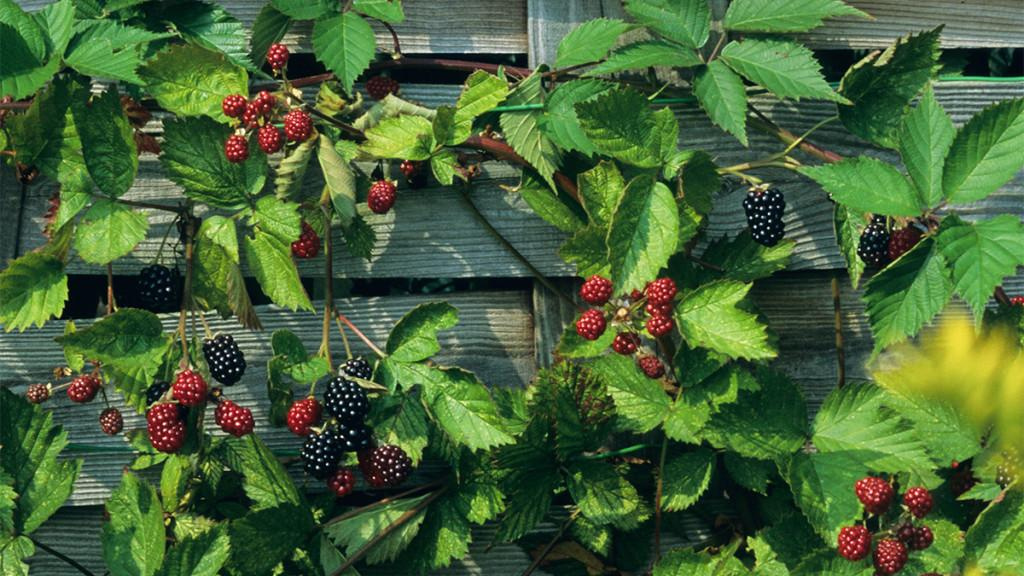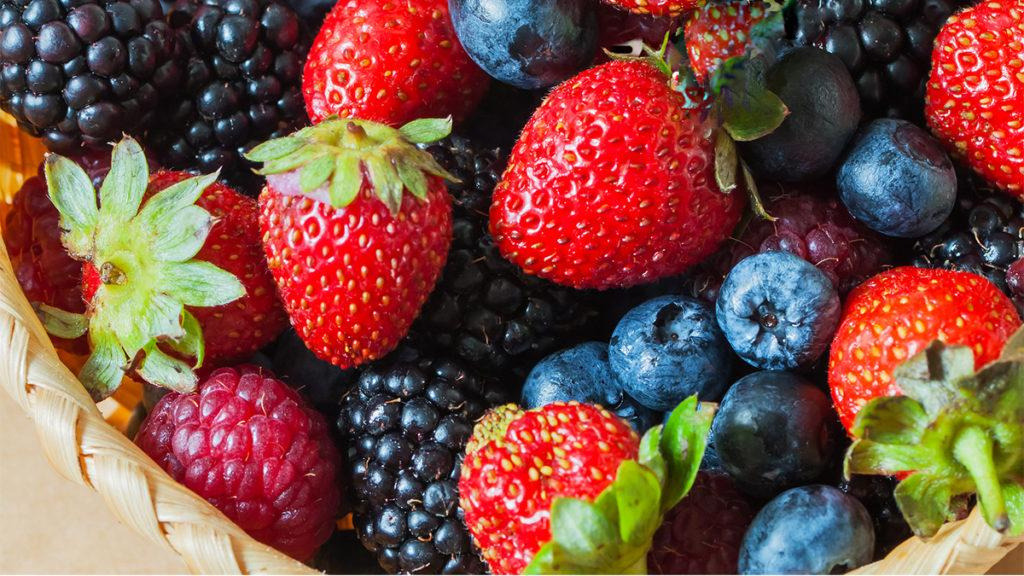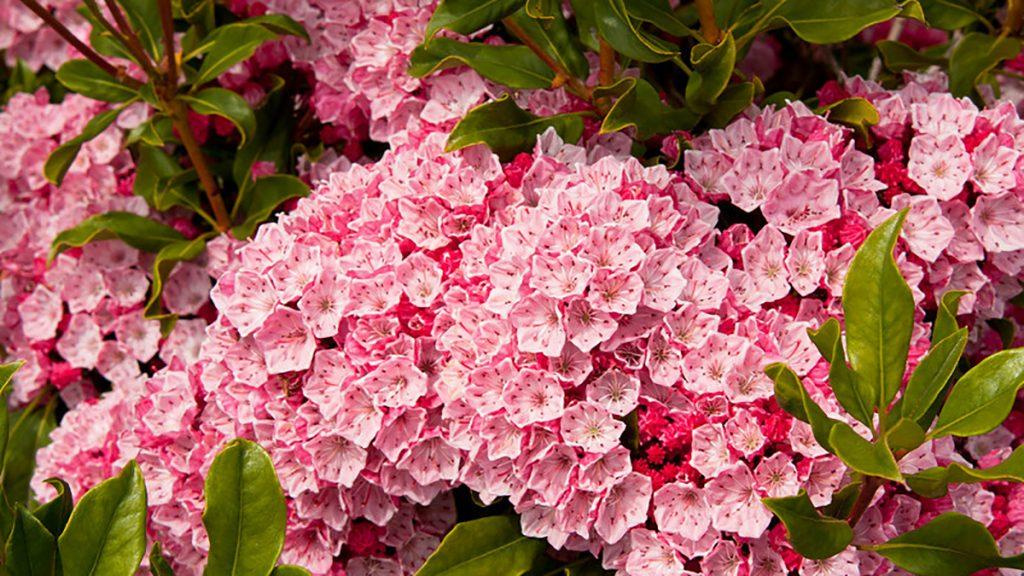You're growing in this Zip Code:
Change LocationDiscover Plants for Your Area
Black Satin Blackberry
Rubus subgenus Rubus Watson 'Black Satin'
Retailers Near You
| Description | This thornless, heat tolerant blackberry is a prolific producer of deliciously sweet and juicy, deep blue-black berries - that can be harvested without getting pricked by thorns! Small, soft pink flowers appear on second year wood, the semi-erect canes yielding a reliable crop of large blackberries in midsummer. Deciduous. |
|---|---|
| Bloom Time | Spring |
| Deciduous/Evergreen | Deciduous |
| Special Features | Easy Care, Showy Fruit, Edible, Fast Growing, Benefits Birds |
| Problems/Solutions | Coastal Exposure |
| Growth Rate | Fast |
| Growth Habit | Upright |
| Landscape Use | Border, Espalier |
| Flower Color | White |
| Foliage Color | Green |
| Companion Plants | Salvia (Salvia); Rosemary (Rosmarinus); Yarrow (Achillea); Russian Sage (Perovskia); Lavender (Lavandula) |
| Care Instructions | Provide fertile, mildly acidic, well-drained soil. Water deeply, regularly in first growing season to establish extensive root system. Feed before new growth begins in spring. After harvest, prune to ground older canes that have fruited, leaving one-year-old canes to produce next season's crop. Train newer canes on trellis. |
| Lore | Blackberry plants produce long stems that grow from the ground - called primocanes and floricanes. Primocanes are canes in their first year of growth, while floricanes are canes that are in their second year of growth. 'Black Satin' produces its blackberries on floricanes, so pruning should be timed to take advantage of this two-year growth cycle. |
| Description | This thornless, heat tolerant blackberry is a prolific producer of deliciously sweet and juicy, deep blue-black berries - that can be harvested without getting pricked by thorns! Small, soft pink flowers appear on second year wood, the semi-erect canes yielding a reliable crop of large blackberries in midsummer. Deciduous. |
|---|---|
| Bloom Time | Spring |
| Deciduous/Evergreen | Deciduous |
| Special Features | Easy Care, Showy Fruit, Edible, Fast Growing, Benefits Birds |
| Problems/Solutions | Coastal Exposure |
| Growth Rate | Fast |
| Growth Habit | Upright |
| Landscape Use | Border, Espalier |
|---|---|
| Flower Color | White |
| Foliage Color | Green |
| Companion Plants | Salvia (Salvia); Rosemary (Rosmarinus); Yarrow (Achillea); Russian Sage (Perovskia); Lavender (Lavandula) |
| Care Instructions | Provide fertile, mildly acidic, well-drained soil. Water deeply, regularly in first growing season to establish extensive root system. Feed before new growth begins in spring. After harvest, prune to ground older canes that have fruited, leaving one-year-old canes to produce next season's crop. Train newer canes on trellis. |
|---|
| Lore | Blackberry plants produce long stems that grow from the ground - called primocanes and floricanes. Primocanes are canes in their first year of growth, while floricanes are canes that are in their second year of growth. 'Black Satin' produces its blackberries on floricanes, so pruning should be timed to take advantage of this two-year growth cycle. |
|---|
Retailers Near You
About Us
We have been pioneers and craftsmen in the art of growing plants for nearly
100 years. Since our founding in Southern California by Harry E. Rosedale, Sr.
in 1926, we have been absolutely dedicated and obsessed with quality.
We have been pioneers and craftsmen in the art of growing plants for nearly 100 years. Since our founding in Southern California by Harry E. Rosedale, Sr. in 1926, we have been absolutely dedicated and obsessed with quality.
